Don’t Lead Me On: Tippet Length For Dry Flies
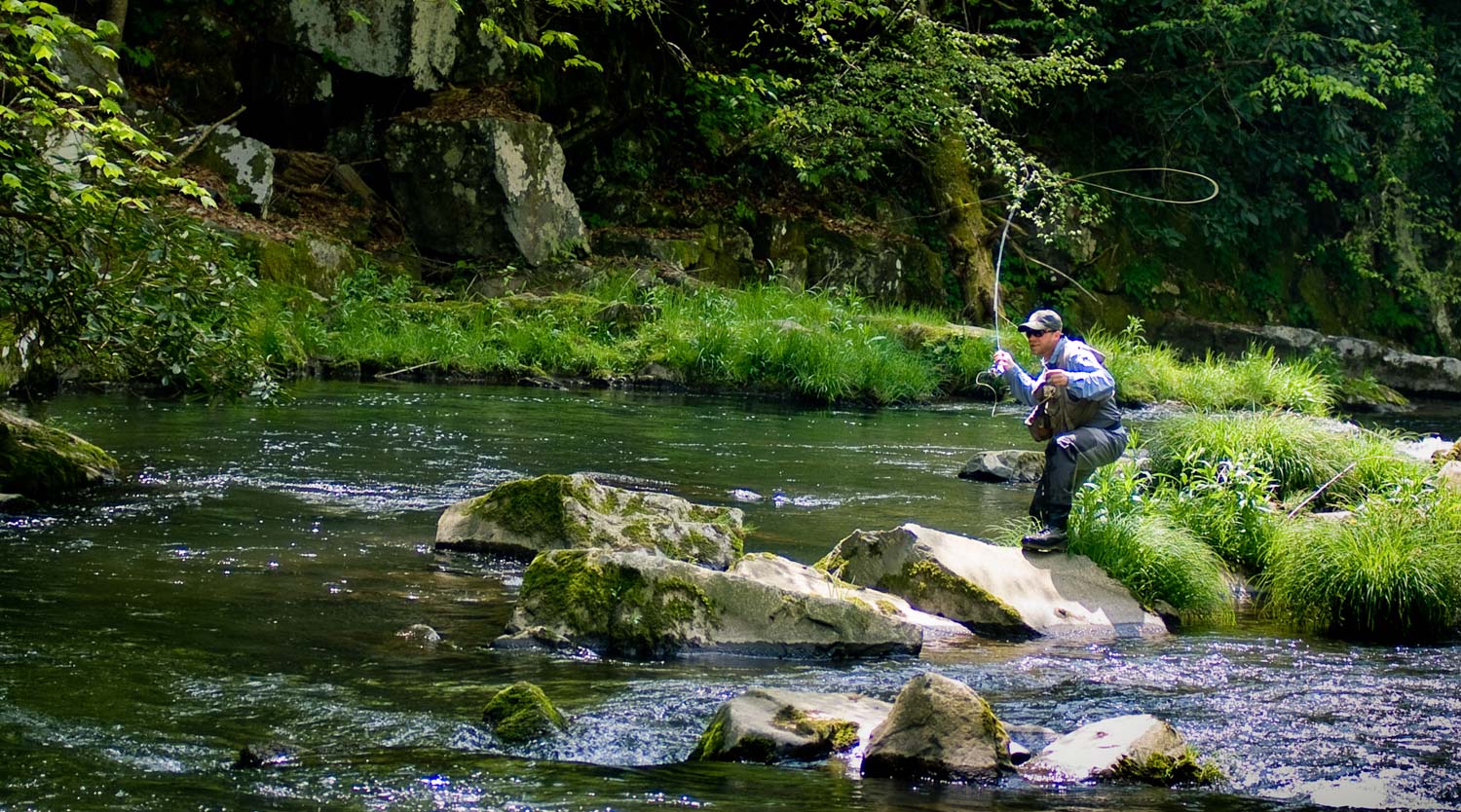
By: Alice Tesar
Dry fly season is upon us and the shop is filled with folks wondering why the fish aren’t interested in their dry flies.
Yes, it is important to get the correct flies but equally as important is your leader and tippet. The biggest mistake these people are making, one I made for years, is just switching out their nymph for a dry fly without addressing their tippet length.
Without giving you too much to work with, recognize that the evolution of tapered leaders has revolved around nymphing and streamer fishing. Engineered with a more aggressive taper to cut wind and cast greater distances. Most factory made tapered leaders ignore the long tippet section required for a dry fly presentation.
Adding one to three feet of tippet (*gasp* yes, your leader and tippet will now be close to 13’ long) will allow you to mend easier (if you need to mend at all) and will give you a more natural drift without the added weight of a tapered leader. Instead of fretting about turning over your fly in a long cast think about
Read More »Fly Casting Tip: Don’t Ride the Brakes During Your Casting Stroke
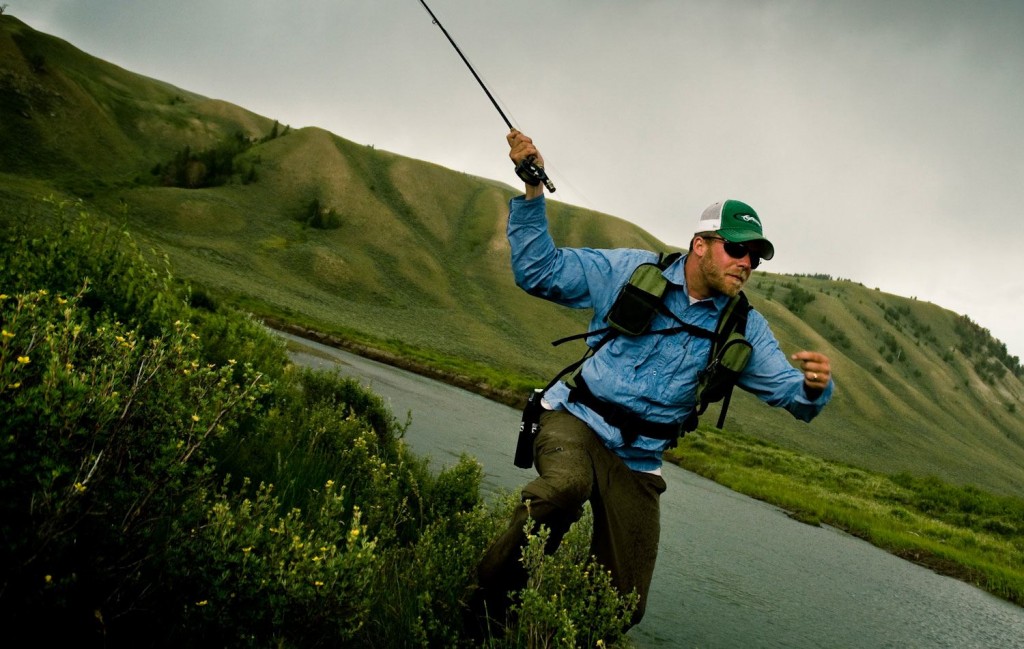
Are you finding that you’re lacking distance and falling short of your target with your fly casting? Is your power and line speed insufficient? If the answer is yes, I bet you’re also getting a fair amount of tailing loops or dreaded wind knots aren’t you? Come on, be honest. There’s absolutely nothing to be ashamed of if you’re periodically falling into this category with your fly casting. Believe me when I say, you’re not at all alone. I see it regularly on the water guiding, and most of the time anglers struggling with these problems usually are only doing one thing wrong with their fly casting. Nine times out of ten, in this scenario, anglers are decelerating their fly rod during their forward cast, back cast, or even both, in some cases. What you need to be doing to fix this problem is smoothly accelerating your fly rod during your casting stroke, making sure you’re stopping the rod at it’s fastest point. This will allow your fly rod to distribute the energy loaded during your cast efficiently, and you’ll have plenty of power (line speed) to reach your targets. Deceleration During Your Casting Stroke: Short Story & Case Study This past fall I was fishing big attractor dry flies with a client of mine. There were plenty of big fish willing to rise to our offerings, but to get them to eat, we had to stay far back and make long casts to them. Otherwise they’d spot us and spook. My client, a capable fly fisherman with strengths in short presentations and roll casts, developed a weakness for distance, when a head wind picked up. No matter how hard he tried, he couldn’t get the distance needed to present his dry fly ahead of the fish. Several minutes we … Continue reading
Read More »10 Tips For Spotting Permit
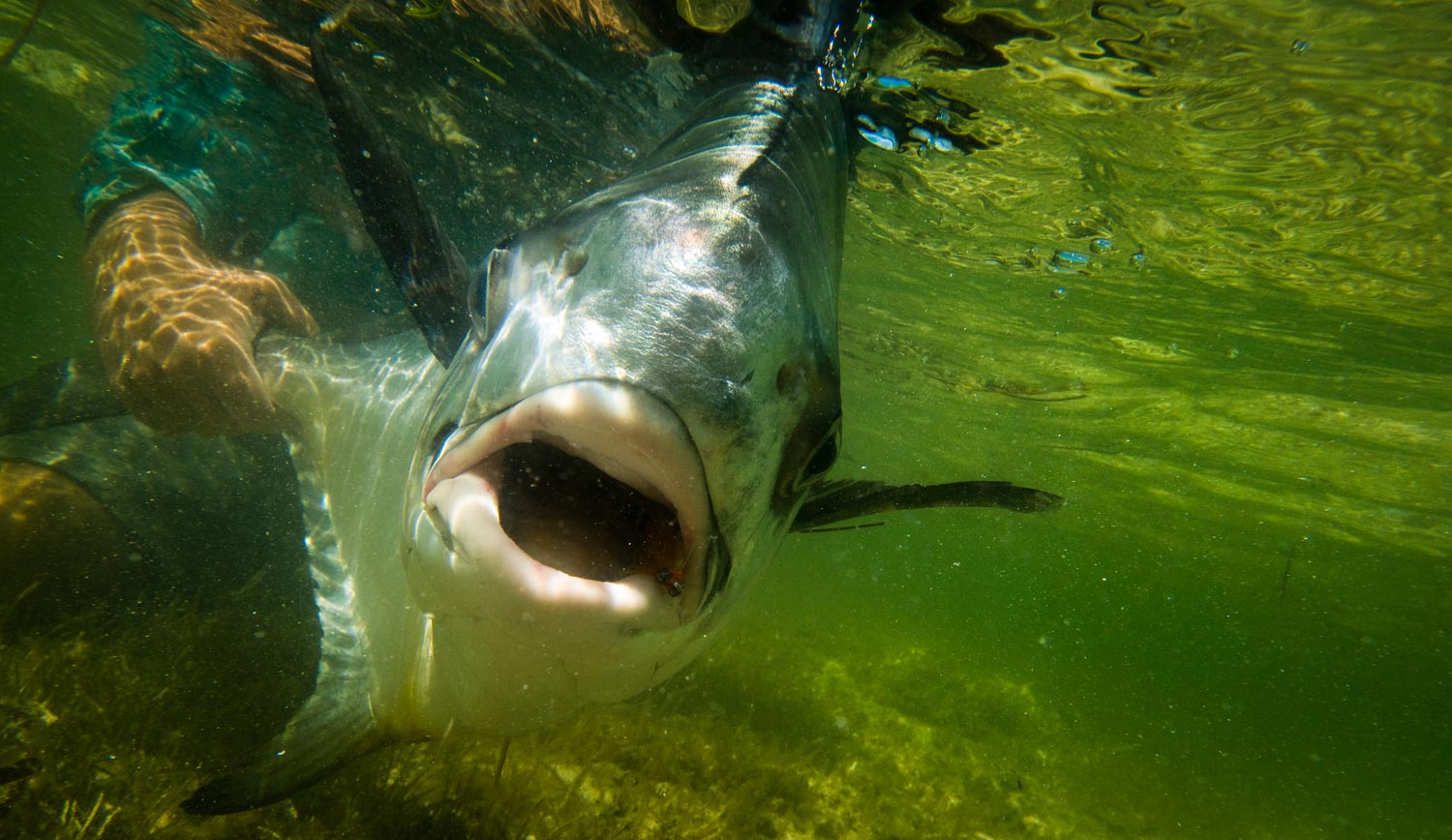
PERHAPS THE LOFTIEST GOAL IN FLY FISHING IS CATCHING A PERMIT.
Maybe it’s not your thing but if there truly is a fish of ten-thousand casts, it’s the permit. There is enough to catching permit to fill a bookshelf or magazine rack. It’s a complicated game, but where it starts is simple. To catch a permit, you must find a permit. And to find a permit, the angler must know what to look for. With that in mind, here are 10 tips to help you spot a permit.
Have the right glasses
This is stupid simple but it really is the most important piece of equipment for the saltwater angler. There is no replacement for quality polarized sunglasses. Good saltwater glasses have a rosy color to the lenses. Pass on green or grey. Copper, rose or brown will offer better contrast. A lighter tint to the lens is valuable on darker days and a frame that shade your eyes is a plus. Glass lenses offer the sharpest vision and, unless you have a heavy coke-bottle prescription, that’s what I recommend.
Tails
The long, graceful forked tail of the permit is its most distinctive feature. It is black in color and stands out when the fish shows its profile. Often the permit’s broad, silver body disappears completely and it is the black double sickle tail that gives him away. This sight is never more exciting than when the tail is held up out of the water. Called ‘”tailing” this happens when the fish feeds off the bottom in shallow water. This means that the fish is actively feeding and the chances of him eating your fly are good.
Spikes
The permit’s long, sickle-shaped dorsal fin will often give him away. When the fish is
Making The Connection
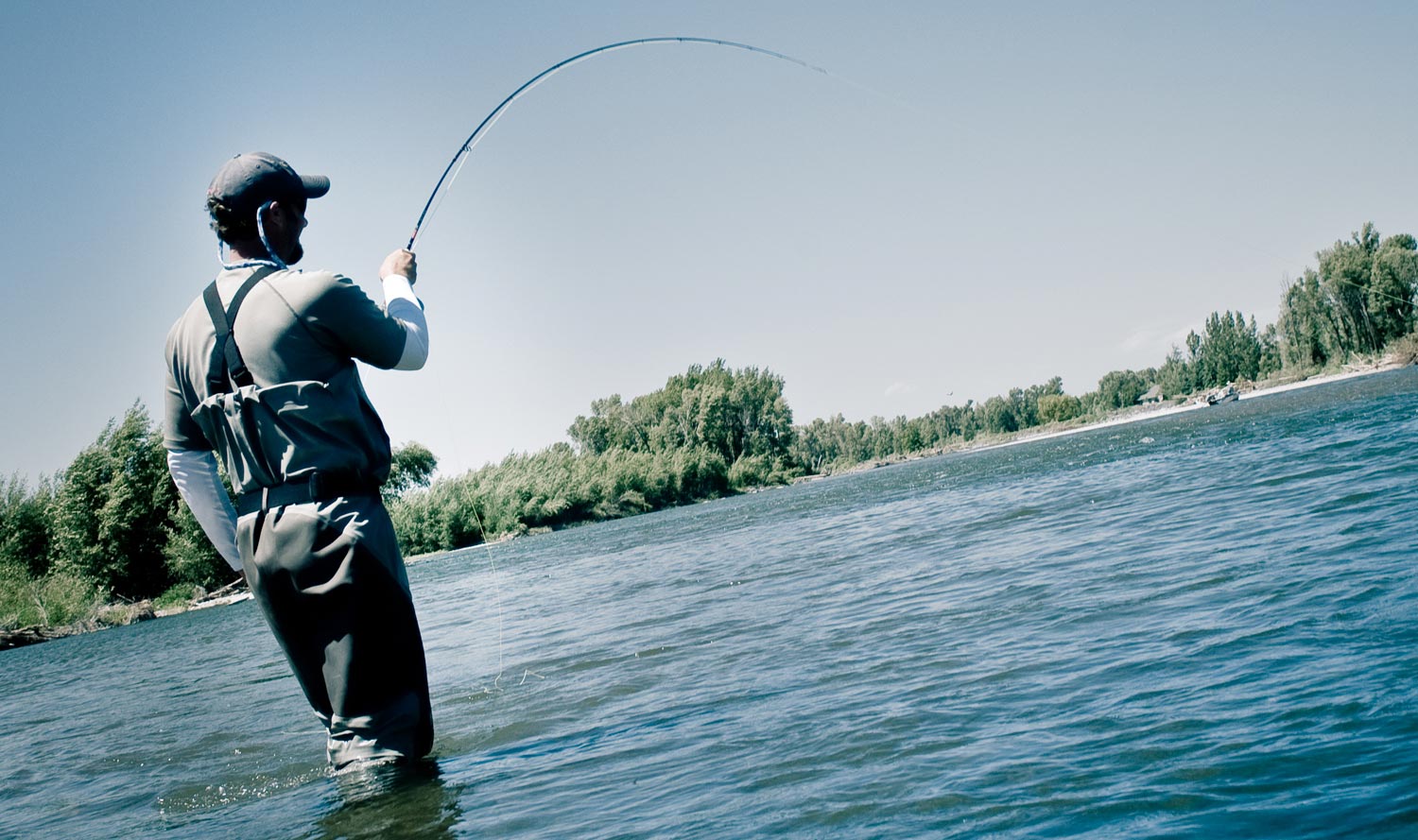
By Devin Olsen
Better techniques for connecting fly line to leader.
I remember when the first welded loops became standard on most fly lines. I was working in a fly shop and guiding summers at the time. I always asked shop customers if they wanted me to leave the loop on or have me add a butt section that they could tie their leaders to— standard practice prior to loops. Almost everyone told me to leave the loop intact. I would silently cringe a little bit and wish them well on the water. Why would I cringe, you ask? After all, what could be easier than looping your leader to your line? Two reasons: 1. Loops further chipped away at the knot tying self-sufficiency I think is lacking in the fly fishing world. Even shop hands didn’t have to learn how to tie a nail knot after loops arrived and it’s a skill that’s nearly disappeared among the general fly angling populace. 2. Loops are pretty terrible at sliding through guides smoothly.
However, welded loops certainly have their place. For instance, they are an absolute godsend when switching sink tips on Skagit heads for Spey fishing. They can also be perfectly fine when fishing a short streamer leader when your line never enters your guides after it’s pulled through at the beginning of the day until you break down your rod when you’re done fishing. However, for the rest of my fishing, the first thing I do when I get a new fly line is cut the loop off straightaway. I’ve seen lots of fish broken off with light tippet when a loop to loop connection has caught a guide. You know, that run the fish always takes as a last gasp when you try and slide it in the net. I’ve also seen plenty of new casters get incredibly frustrated when they can’t get line out their rod tip to begin their cast. We’ve all seen the awkward 10 false casts when there could be one or two. There’s a definite loss of efficiency when this is the case. And while most situations don’t require it, when you are fishing gin clear smooth water to ultra-spooky fish, the loop to loop connection can spook a few extra fish because its extra mass lands on the water a little bit harder and pulls off with a little extra disturbance.
My aversion to loop-to-loop connections became even greater once
Read More »6 Tips for Catching Suspended Trout
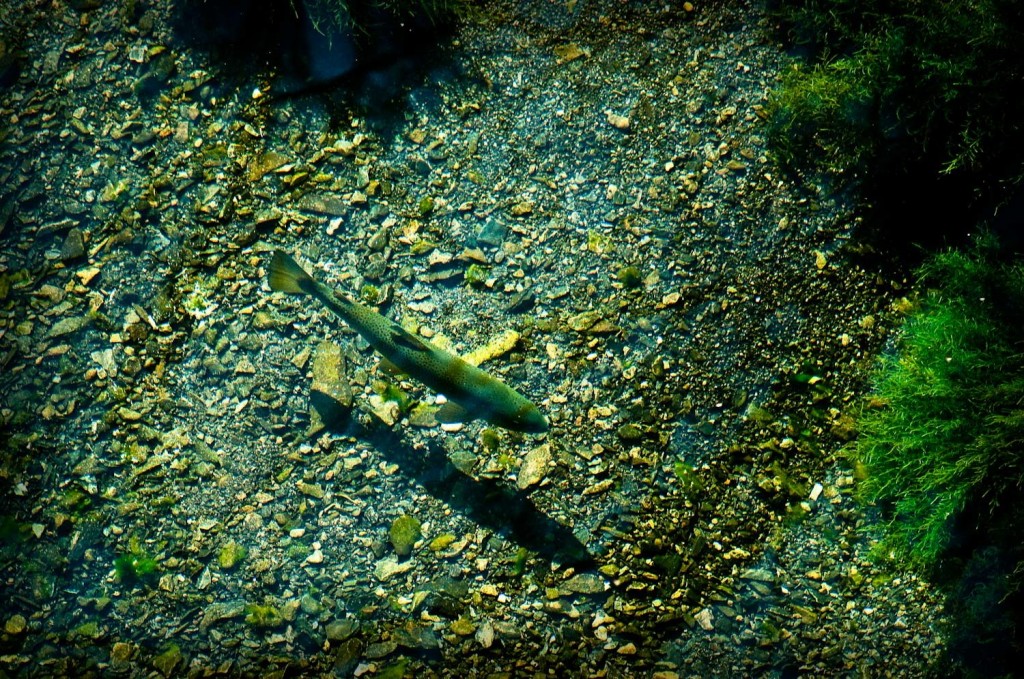
One of the toughest situations I’ve encountered trout fishing over the years, is when trout are suspended in the water column and feeding in a stationary position.
These trout are usually too deep to persuade them to rise to your dry fly on the surface, yet are also holding too far up from the bottom for you to easily dredge your tandem nymph rig in front of them. Most of the time, this is a frustrating sight-fishing scenario for the fly angler, where all you see is the trout occasionally open and close its mouth. You can see the trout you’re trying to catch, but no matter how hard you try, you can’t seem to get your flies to drift in the correct feeding zone of the holding trout and get them to eat. I see this situation a lot on deep clear pools or on long and slow flowing runs, but you can also find this same situation in pocket water where eddies and irregular bottom structure provides slower water holding stations/sanctuaries for trout as well.
Make no excuse, these trout are catchable. It just requires a more technical approach and increased awareness of where your flies are drifting for you to find success. For fly anglers to catch trout in this situation they need to correctly match their fly fishing rig with the water they’re fishing, and slow down and concentrate on making quality presentations not quantity.
Tip 1: Get as close as you can to the sighted trout without spooking it.
I’ve found the trout that are suspended and feeding stationary, usually are also lazy. They don’t want to have to swim out of their position to feed, and that means fly anglers will need to make accurate and precise presentations, since the strike zone is so small. By getting close to your target you’ll find it much easier to keep your flies consistently drifting at the correct depth and in-line with the trout. Often if you’re positioned too far away, you’ll find one presentation will be good, and the next three will be off target. This might not seem like a big deal, but you’re not only trying to get good presentations, you’re also trying to read the fish to see if it likes your pattern or not as well. Getting into proper position and keeping your casting distance to a minimum will allow you to accomplish both much quicker.
Tip 2: Take the time to look for drifting food in the water before you choose your fly patterns
In the last tip, I said, “usually these suspended fish are lazy”. They are in the big spectrum, but it’s important to understand that when trout are suspended and feeding stationary, most of the time it’s because the trout are keyed in on a specific type of aquatic insect, that is drifting at the level the trout is holding. Spend a few minutes watching the feeding trout and look for any drifting bugs. If you see the trout continuing to feed regularly, but you can’t see any drifting food with your naked eye, a light bulb in your head should be going off and telling you to tie on fly patterns that are small. Try using a size 18-22 pheasant-tail nymph or a midge pattern. Don’t expect your size 10 woolly bugger to get the job done in this situation. Sometimes it will work, but most times, these fish are selectively feeding on small micro-invertabrates, and you need to downsize your flies to fool the trout into thinking it’s eating the same stuff it’s been feeding on the last couple hours.
Tip 3: Try a dry fly with two nymph droppers
This won’t work all of the time, but in shallow water situations, I’ve found good success using a dry fly and then tying on a long tandem dropper (two nymphs off the back of the dry fly). Approximate how deep you think the fish is holding, and tie on your lead dropper at that depth. Let’s say the trout you are sight-fishing to, is holding at two feet of depth. Tie on
Gold Nugget
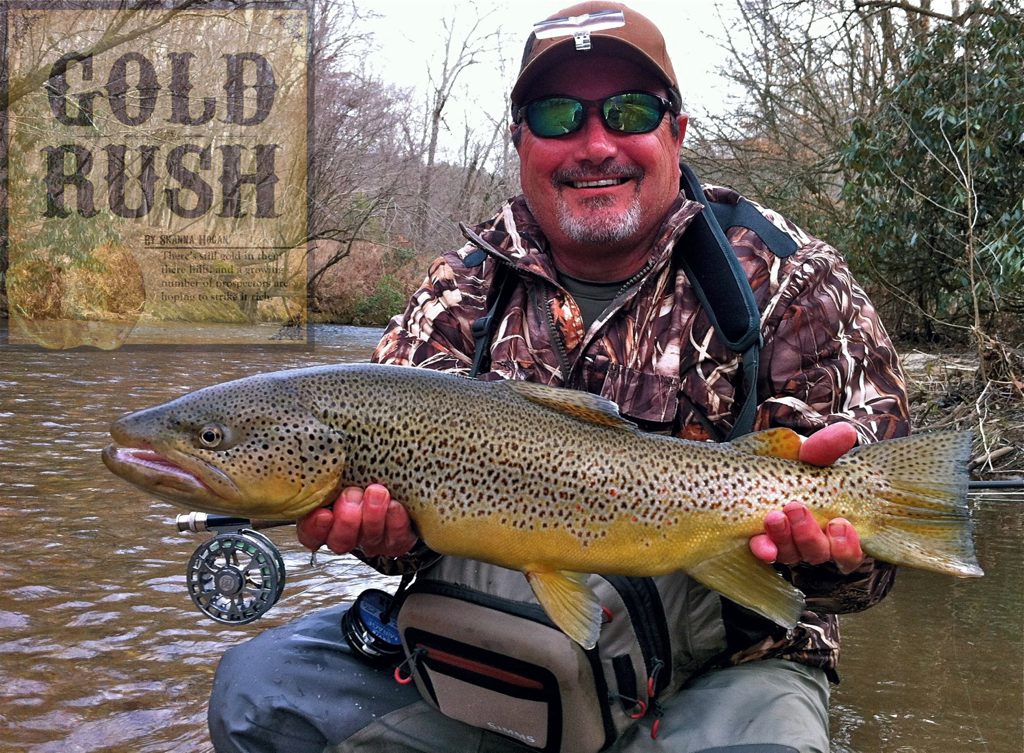
Trophy brown trout like this one are worth their weight in gold.
I’m a big fan of that Gold Rush TV show filmed up in Alaska. I don’t know what it is about that show but I’m hooked. Go ahead, call me dumb for wasting my time watching it, I’m just dying to see one of those crews dig up a fortune of gold that will give all of their families peace, security and well being. If there’s one thing I’ve learned after watching Gold Rush for almost three seasons now, it’s that gold mining does not come easy. It requires every ounce of energy and stubborn persistence to find enough gold for you to come out ahead, and then, even the biggest of crews can get outperformed by one lucky schmuck with a metal detector. Just ask that Australian amateur gold prospector with a metal detector who recently found a 12-pound nugget worth well over $300,000. Sometimes, no matter how diligent you are, it all boils down to timing and luck. The entire deal felt eerily similar to a giant 26″+ wild brown trout a client of mine landed last week.
Read More »Covering a Hatch Starts with Carrying the Right Flies
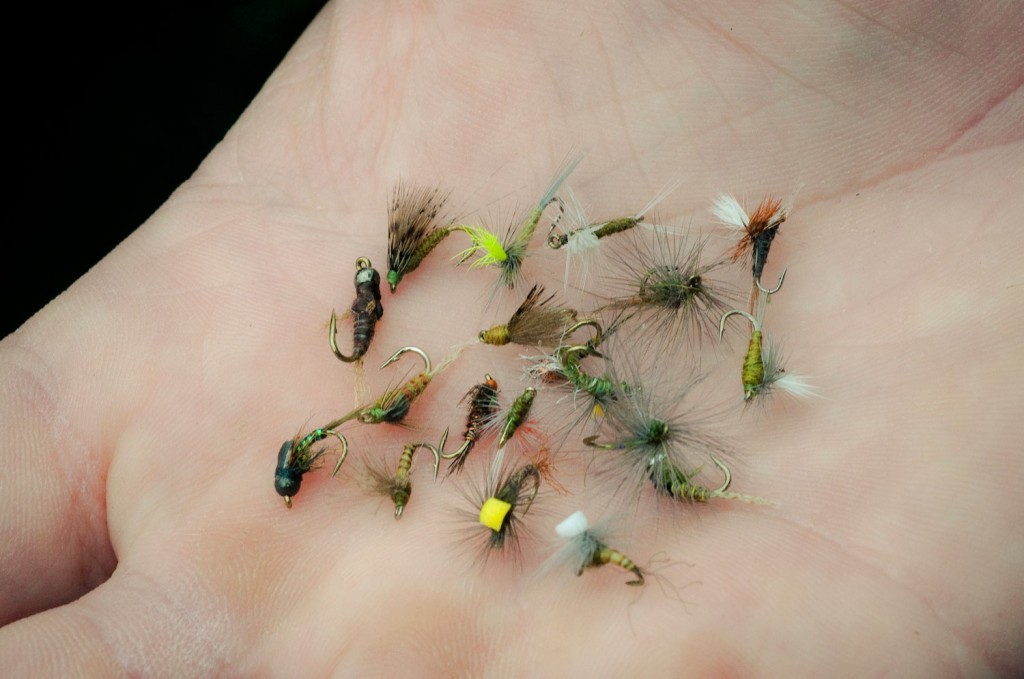
HAVE YOU EVER BEEN STANDING IN THE RIVER WATCHING A BIG HATCH UNFOLDING WITH RISING FISH ALL AROUND YOU, BUT FOR SOME REASON YOU CAN’T GET THE FEEDING FISH TO EAT YOUR FLIES?
Covering and owning a hatch starts with you first carrying the right fly patterns. When you know you’re going to encounter a specific hatch on the water, always carry multiple variations (colors, sizes) and stages (nymph, emerger, dun, spinner) to make sure you’re covered. Trout can get really picky during selective feeding.
This very situation happened to me last year running a guided float trip during an intense sulphur hatch. There was yellow everywhere, and fish were in a feeding frenzy, but the trout wouldn’t eat any of my sulphur patterns I tied on for my clients. Even my CDC go-to patterns that always work, were shunned by the feeding trout. I finally found a sulphur pattern after my seventh try that the trout consistently liked, and it saved the day. It ended up being nothing special, just a dun with in a slightly different color shade. The remainder of the float trip all I could think about was how important it was that I had so many different sulphur imitations on hand. It would have been a long quiet drive back if my clients witnessed an epic hatch with perfect conditions, and we ended up striking out on the water.
Your standard parahcute style dun with a small nymph dropper off the back will not always work. Below are some examples of other fly pattern options for rounding out your fly box and owning a hatch:
Drys
Parachute Style (with and without trailing shuck)
Traditional Style (palmered hackle)
Thorax Style (Palmered Hackle with hackle trimmed off on the bottom so pattern rides low on the water)
No Hackle Style (Just like it sounds, no hackle is used in the recipe)
CDC Style (CDC is substituted for
Read More »A Short Quick Cast
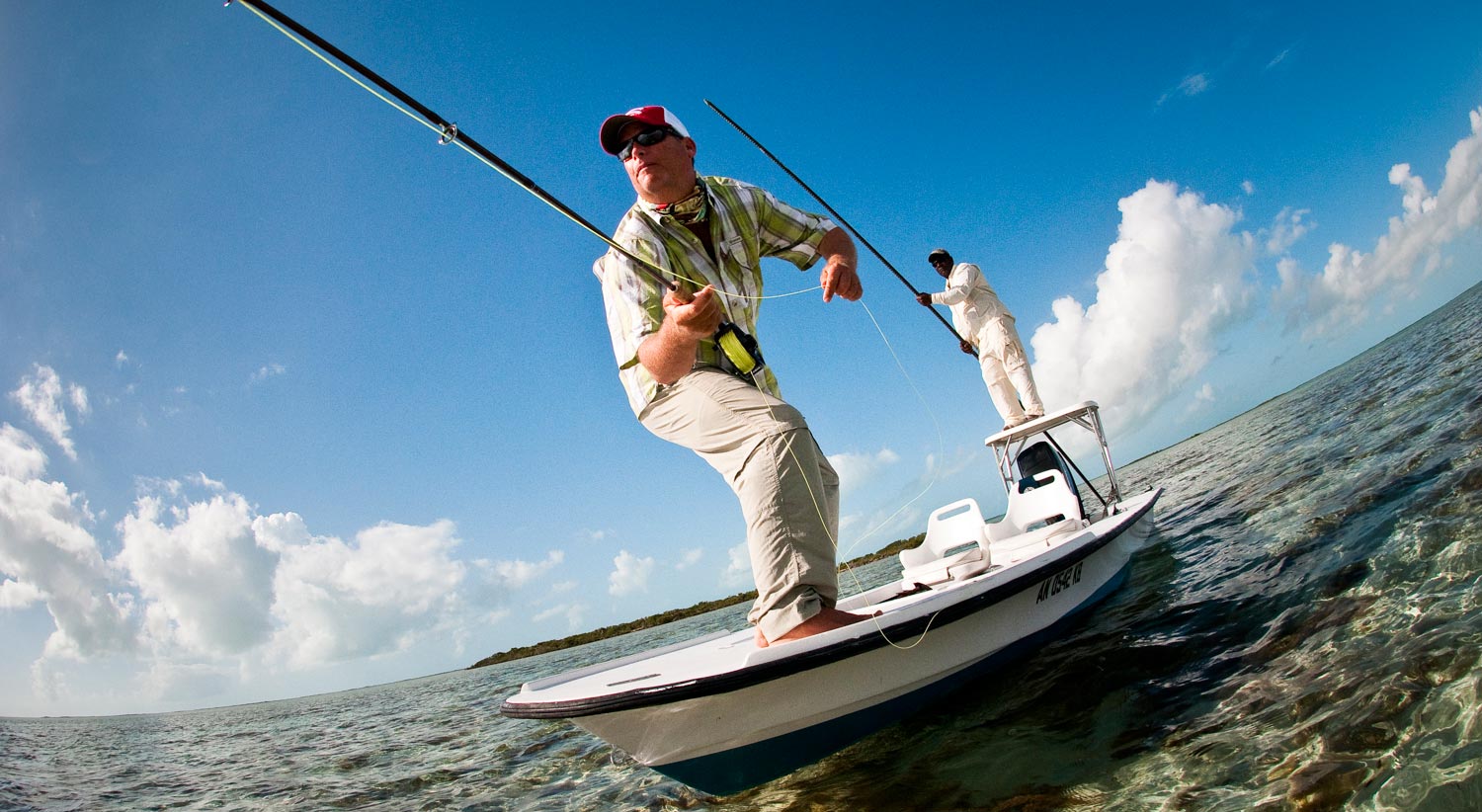
By Bruce Chard
MANY FLY ANGLERS THINK, IN ORDER TO BE SUCCESSFUL IN THE SALT, YOU NEED TO HAVE A GREAT DISTANCE CAST.
That can be true on a calm day when all fly anglers struggle to add another 5-10ft on their cast. But in reality the anglers that can get the fly where it needs to be within 50ft take advantage of a large number of their opportunities. Not only is accuracy a huge part of success in the salt, the most valuable asset is speed. If you can get the fly there fast with minimal movement, your odds of a hook up go through the roof.
Seeing and spotting fish for most fly anglers is challenging. Taking longer to find or see a fish frequently leaves anglers with a close shot. The problem that we run into here is lack of time. By the time the angler finally can get a visual on the fish, the amount of time left to act is simply not enough.
This is when a short quick cast is a must. You might be wondering, how hard can it be to make a short cast? You might be surprised how hard it is to lay out a 12-13ft leader with a heavy fly into a stiff 25 knot wind at 25ft.
The main reason for short shots not laying out straight is the lack of line or weight outside the end of the rod tip. Since you have to make a close shot, you can’t get enough line outside the tip to load the rod and make the cast.
SO HOW DO WE EFFECTIVELY AND EFFICIENTLY MAKE THIS CAST?
Loading only the Tip
Start by loading just the section of the rod that you need, to make your cast. One of the key essentials
Is That Fly a Nymph? A Look At Insect Life Cycles
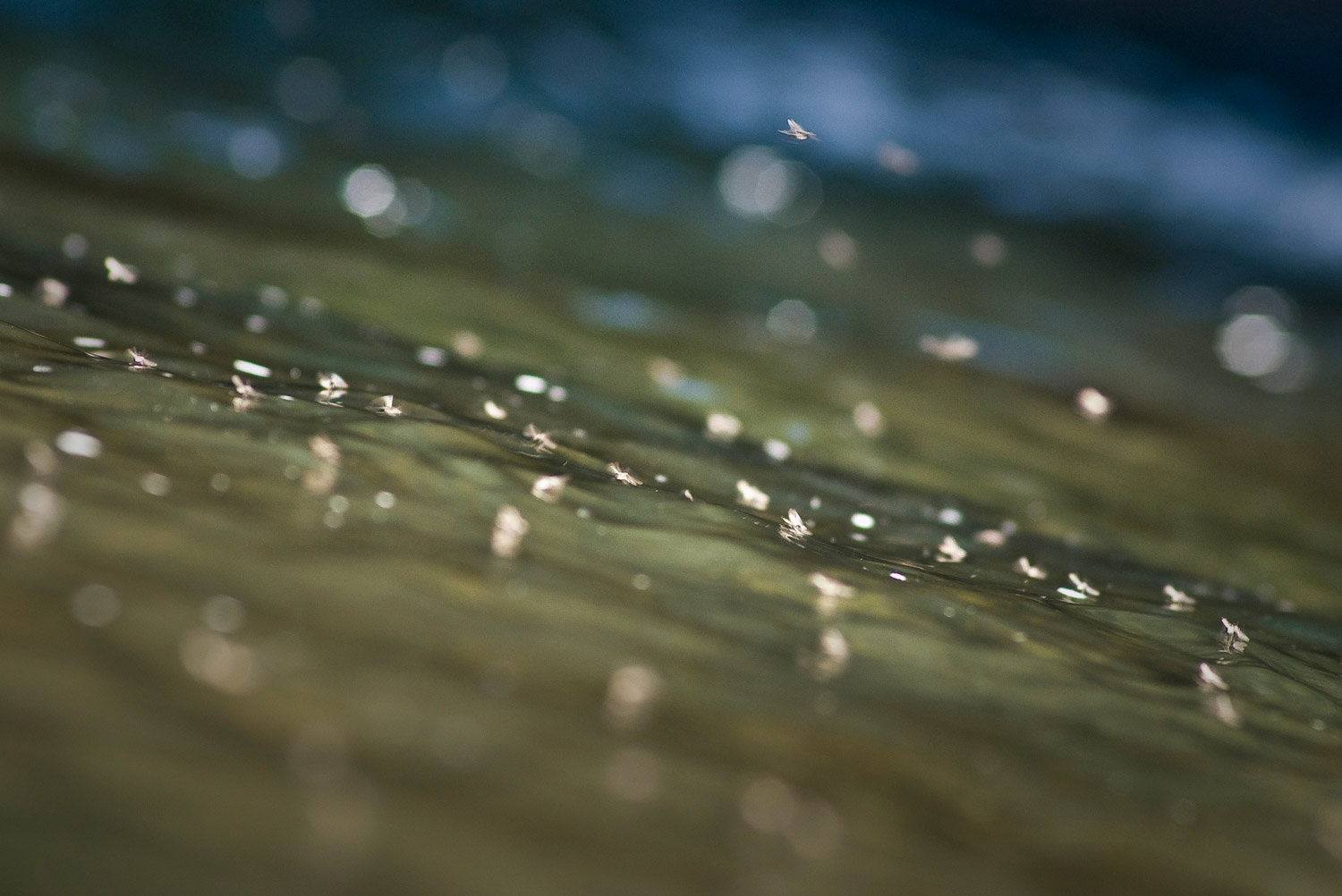
IS THAT FLY A NYMPH? THAT’S THE QUESTION I GOT FROM A READER THE OTHER DAY.
A fair question from a guy who’s only fly fished for redfish and isn’t familiar with trout flies. A simple question with a very complicated answer. Complicated enough that I figured it deserved an explanation, and why not share it.
The fly in question was a midge pattern, so technically not a nymph.
The word “nymph” however, like so many words, shares two meanings. The literal (denotative) meaning is a juvenile mayfly or stonefly in the subsurface phase of its life cycle. The word is also used to refer to flies that imitate these insects. Since a midge starts its life as a larva rather than a nymph, the flies that imitate them are not technically nymphs.
The word nymph also has a conversational (connotative) meaning. It is often used to refer to flies that are dead drifted below the surface. A San Juan Worm or an egg pattern is often referred to as a nymph because of the way they are fished. Some folks will use the term “wet fly” for any fly fished below the surface but this is not correct either. Wet flies are a specific style of fly intended to be fished in a different manner. So describing the midge fly as a nymph, while inaccurate, is not necessarily wrong. It can be fished as a nymph, connotatively.
I’m not generally one to engage in exercises of semantics but I believe there is more at stake here than clarity of the word. I know that when I first became aware of midge patterns many years ago, I was reluctant to fish them because
Read More »Fly Fishing with Stealth – 8 Common Mistakes
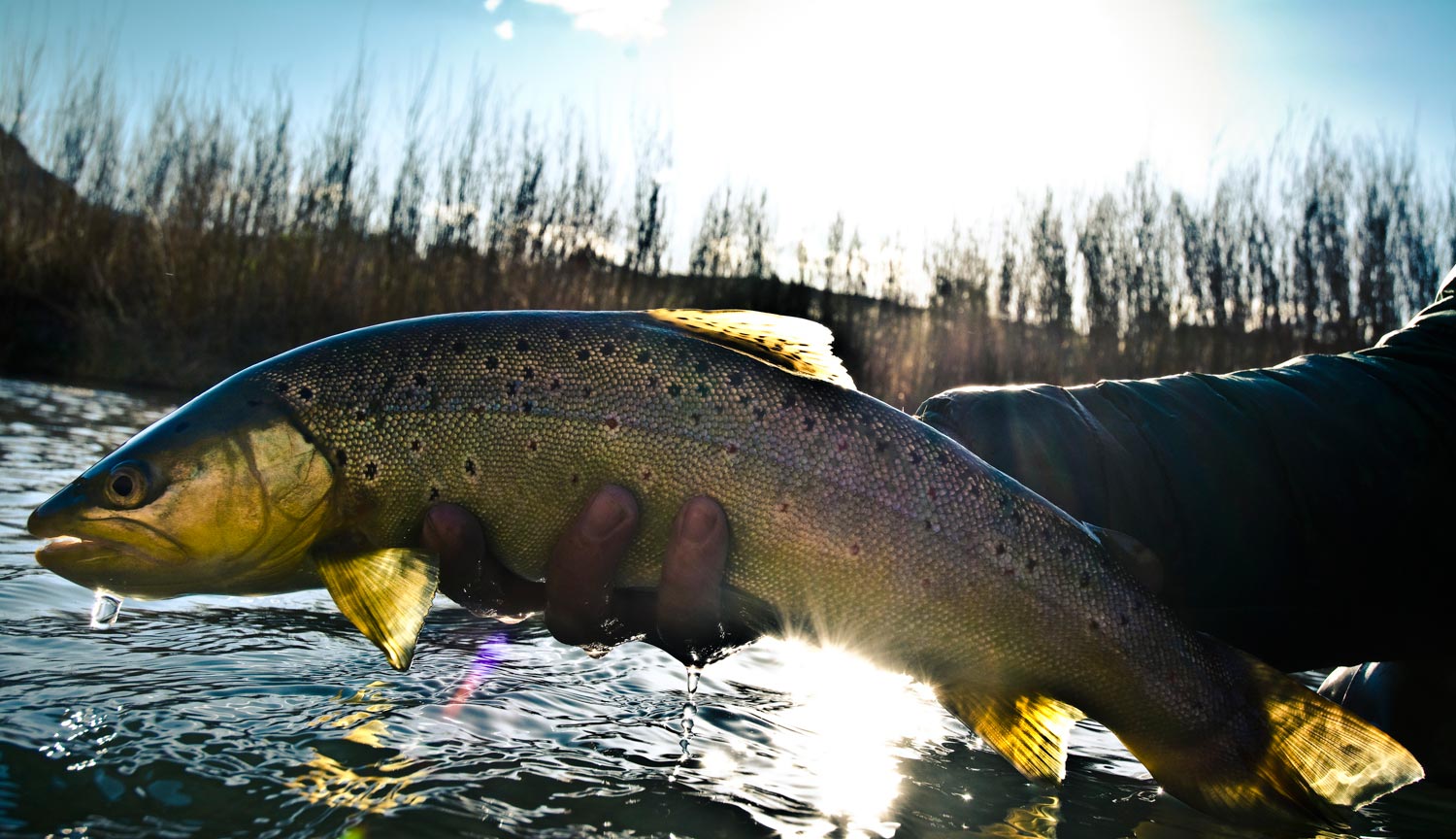
How often to you think anglers miss opportunities catching trout because of the lack of stealth?
The more educated trout populations are in a stream, river or lake you’re fly fishing, the more important it is for fly anglers to mimic the way a hunter stalks game in the field. I estimate that I give away upwards of 50% of my trout catching opportunities due to my lack of stealth. Below are 8 common mistakes fly anglers make on the water that blow their cover and success.
Read More »